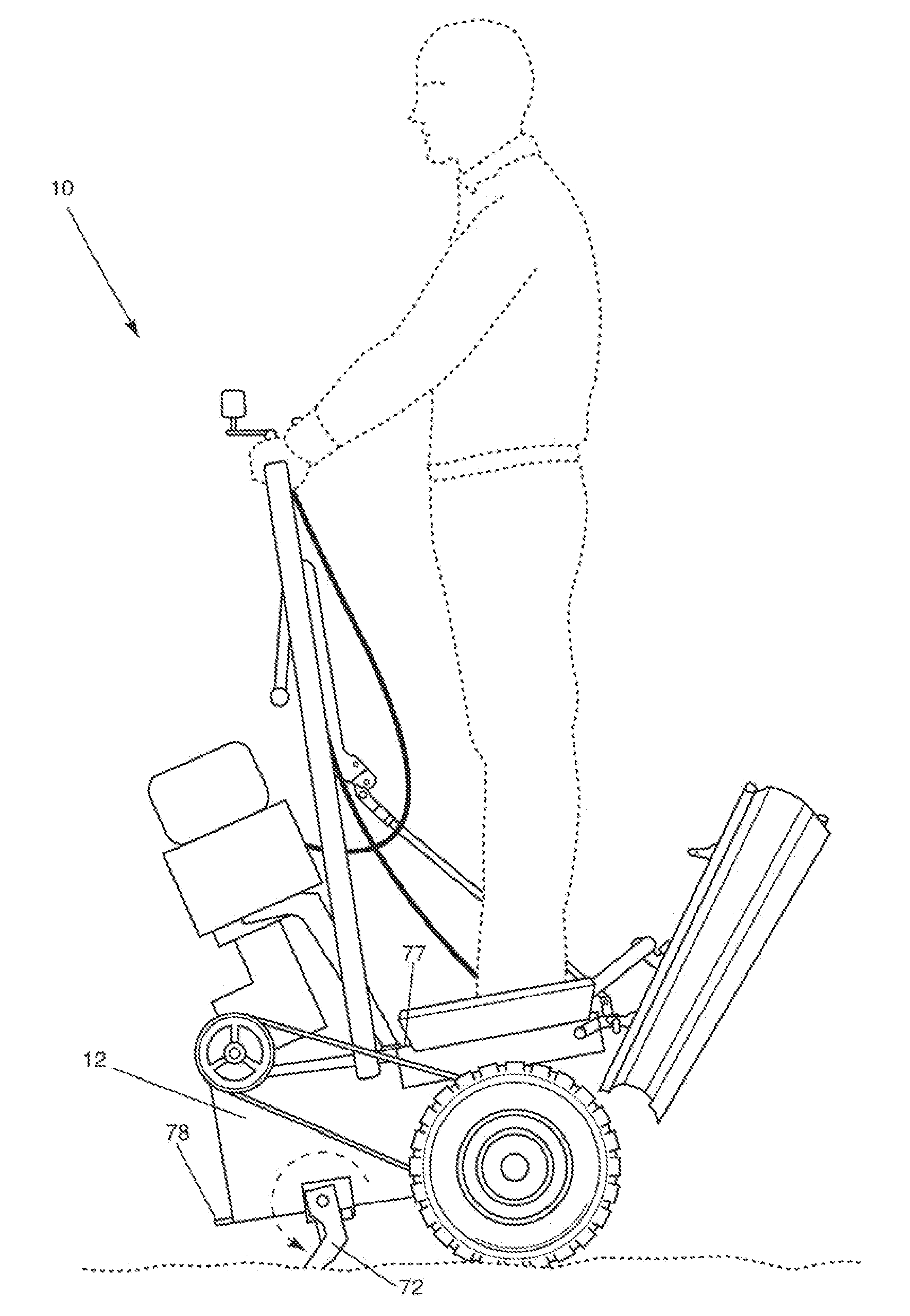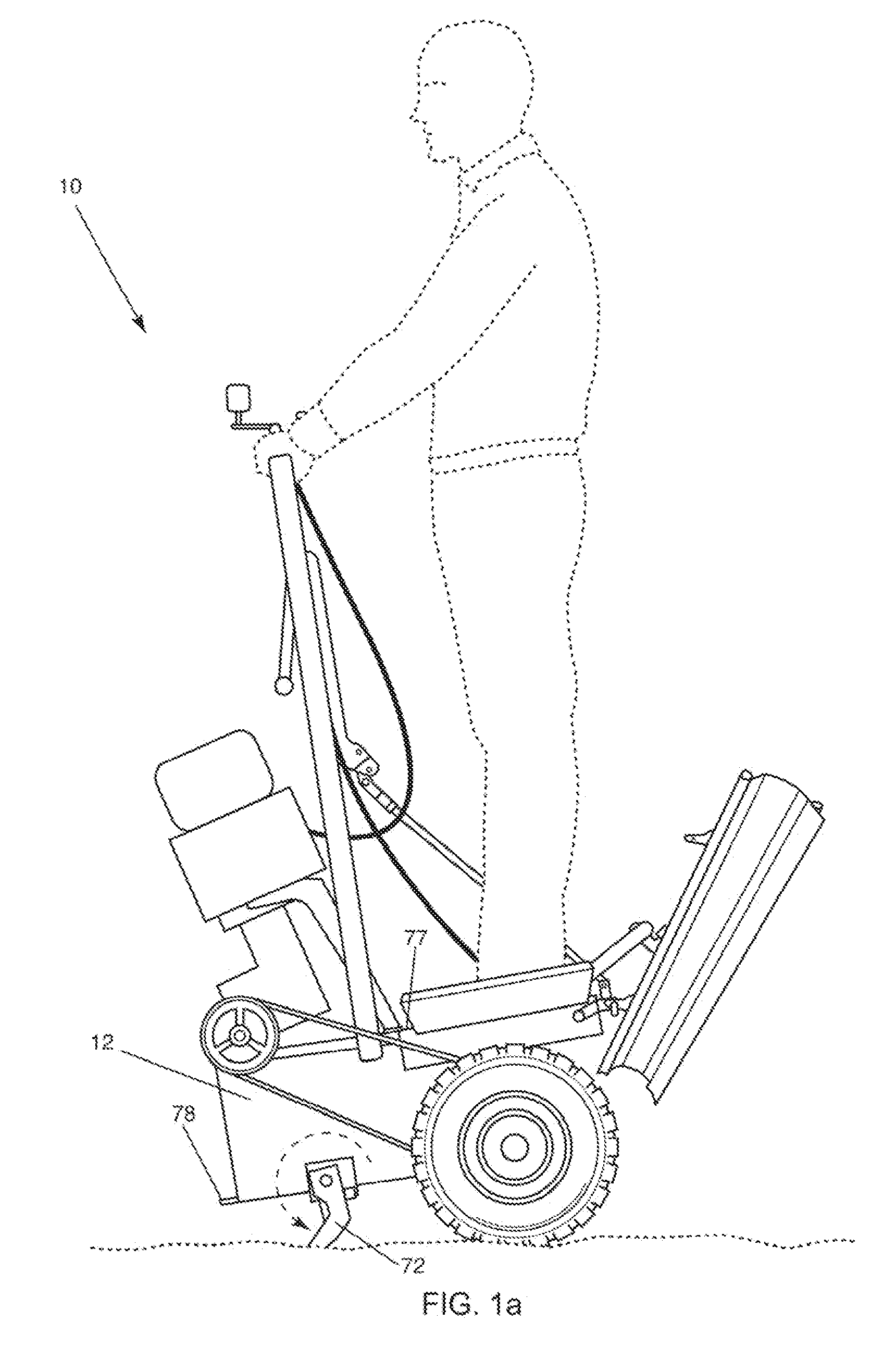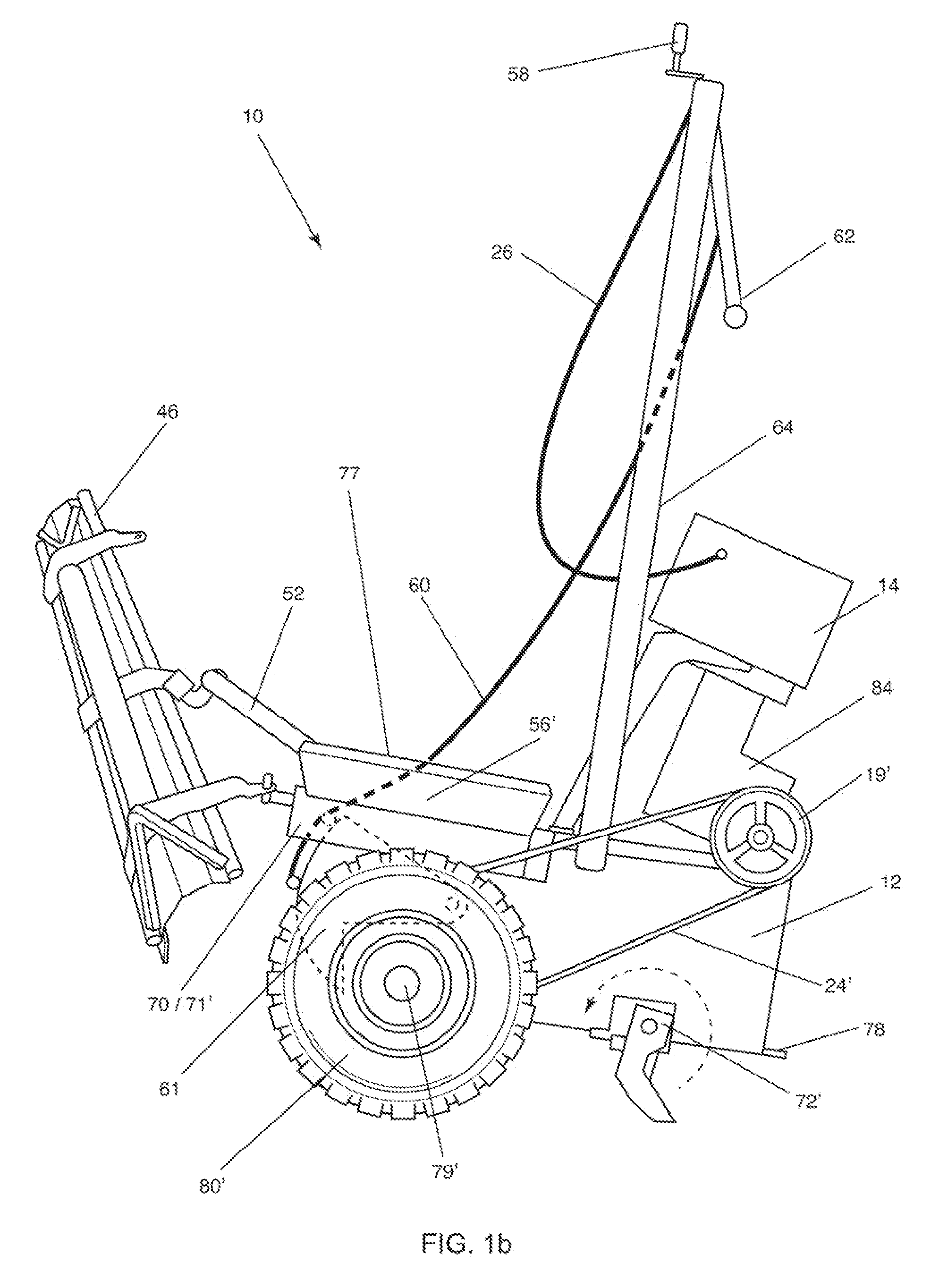Apparatus And Method for Material Distribution
a material moving apparatus and material technology, applied in the direction of snow cleaning, transportation and packaging, mechanical machines/dredgers, etc., can solve the problems of extremely maneuverable and nimble material moving apparatus, and achieve the effects of less pressure, more pressure, and convenient operation
- Summary
- Abstract
- Description
- Claims
- Application Information
AI Technical Summary
Benefits of technology
Problems solved by technology
Method used
Image
Examples
example 1
[0095]One embodiment of the present invention was used to grade a hard packed, rutted, potholed base course gravel roadway. The length of road used in the test was approximately 100 feet long and 18 feet wide. The duration of time needed to complete the task was approximately one hour and 45 minutes with the end result being a smooth surface across the entire roadway with a two inch crown placed down the length of the centerline of the road (the roadway center elevation was two inches higher than the roadway edge's elevation) and drainage ditches cut along both sides of the roadway. The machine used in the test is shown in FIGS. 3a-3c using the embodiment of the invention comprising a dual engine drive system.
[0096]This embodiment provided approximately the same functionality as a hydrostatic drive system with the exception that the dual engine drive system does not have the capability of reversing the wheels. Therefore, reversing was accomplished by walking the wheels back via hand...
example 2
[0100]This example utilized the embodiment illustrated in FIGS. 1a-1i, comprising a single engine drive with drive sprocket clutches 19 and 19′ fitted with a snowplow attachment 96 on the front end as shown in FIG. 1i. Plow vertical member with swivel connection 95 was attached to bucket 12 by clamping around bucket blade 78, and horizontal plow member 97 was attached to bucket 12 with slotted hole fasteners at the bottom of the bucket near ripper stops 76 and 76′. Snow was plowed with the embodiment in an asphalt parking lot with a snow accumulation of approximately one foot with some packed snow, as evidenced by tracks from approximately three or four cars prior to starting the test. The size of the lot was 50 feet by 100 feet inside of the parking bumpers with a total of sixteen parking spaces in the lot with a twenty-foot wide roadway down the middle of the lot. Tire chains were also fitted on the embodiment used in this example.
[0101]The advantages of this embodiment of the pre...
example 3
[0106]An embodiment of the present invention comprising the dual engine type as shown in FIGS. 3a-3c was tested in conditions mimicking those typically found in the mountains in New Mexico. The dual engine embodiment cut a fire line in a forest firefighting situation. Flammable plant materials, degraded pine needles, leaves, and branches, were removed in a linear path, and the flammable materials were windrowed on the advancing fire side of the line. The majority of this work was performed using rear grading moldboard 46 with the dual engine embodiment in the walk behind position. Front bucket 12 was then used to cut more difficult dense growth areas with the dual engine embodiment in the mounted position.
[0107]Rear grading moldboard 46 initially cut the fire line while in the locked vertical angle position, where vertical angle turnbuckle 215 held the rear moldboard blade locked at a desired angle to the ground relative to axles 79 and 79′. Turnbuckle 215 was adjusted to force the ...
PUM
 Login to View More
Login to View More Abstract
Description
Claims
Application Information
 Login to View More
Login to View More - R&D
- Intellectual Property
- Life Sciences
- Materials
- Tech Scout
- Unparalleled Data Quality
- Higher Quality Content
- 60% Fewer Hallucinations
Browse by: Latest US Patents, China's latest patents, Technical Efficacy Thesaurus, Application Domain, Technology Topic, Popular Technical Reports.
© 2025 PatSnap. All rights reserved.Legal|Privacy policy|Modern Slavery Act Transparency Statement|Sitemap|About US| Contact US: help@patsnap.com



